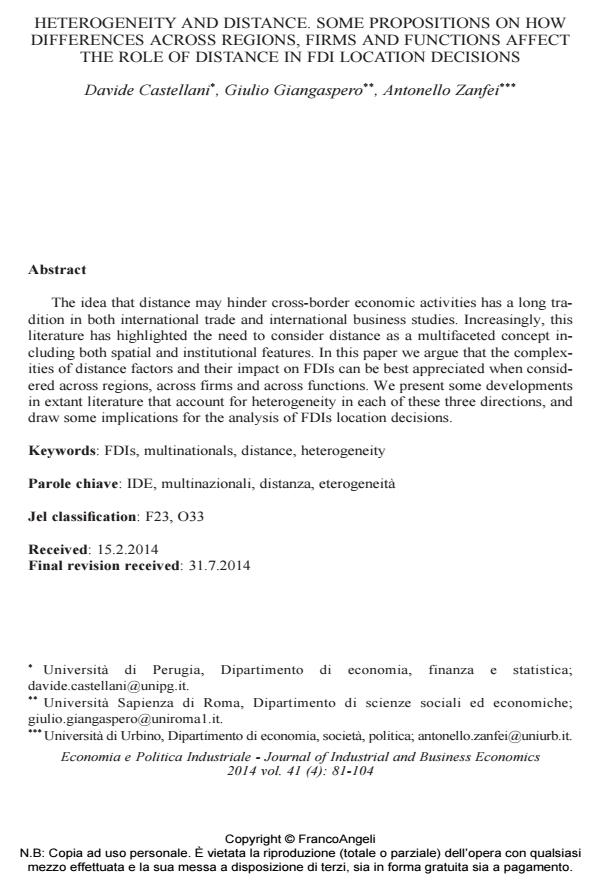Heterogeneity and distance. some propositions on how differences across regions, firms and functions affect the role of distance in fdi location decisions
Titolo Rivista ECONOMIA E POLITICA INDUSTRIALE
Autori/Curatori Davide Castellani, Giulio Giangaspero, Antonello Zanfei
Anno di pubblicazione 2014 Fascicolo 2014/4
Lingua Inglese Numero pagine 24 P. 81-104 Dimensione file 87 KB
DOI 10.3280/POLI2014-004005
Il DOI è il codice a barre della proprietà intellettuale: per saperne di più
clicca qui
Qui sotto puoi vedere in anteprima la prima pagina di questo articolo.
Se questo articolo ti interessa, lo puoi acquistare (e scaricare in formato pdf) seguendo le facili indicazioni per acquistare il download credit. Acquista Download Credits per scaricare questo Articolo in formato PDF

FrancoAngeli è membro della Publishers International Linking Association, Inc (PILA)associazione indipendente e non profit per facilitare (attraverso i servizi tecnologici implementati da CrossRef.org) l’accesso degli studiosi ai contenuti digitali nelle pubblicazioni professionali e scientifiche
The idea that distance may hinder cross-border economic activities has a long tradition in both international trade and international business studies. Increasingly, this literature has highlighted the need to consider distance as a multifaceted concept including both spatial and institutional features. In this paper we argue that the complexities of distance factors and their impact on FDIs can be best appreciated when considered across regions, across firms and across functions. We present some developments in extant literature that account for heterogeneity in each of these three directions, and draw some implications for the analysis of FDIs location decisions.
Parole chiave:IDE, multinazionali, distanza, eterogeneità
Jel codes:F23, O33
- The Italy-MEDA emerging markets partnership: trade relationships, cross-border operations on firms' equity, and constant market shares analysis Francesco Scalamonti, in Data Science in Finance and Economics /2025 pp.258
DOI: 10.3934/DSFE.2025012
Davide Castellani, Giulio Giangaspero, Antonello Zanfei, Heterogeneity and distance. some propositions on how differences across regions, firms and functions affect the role of distance in fdi location decisions in "ECONOMIA E POLITICA INDUSTRIALE " 4/2014, pp 81-104, DOI: 10.3280/POLI2014-004005